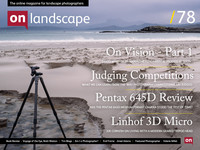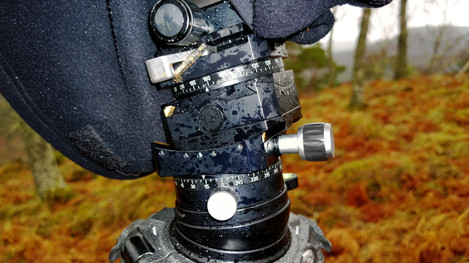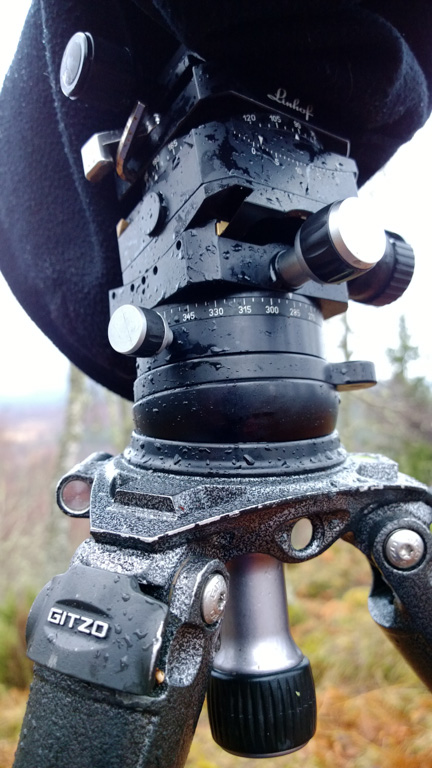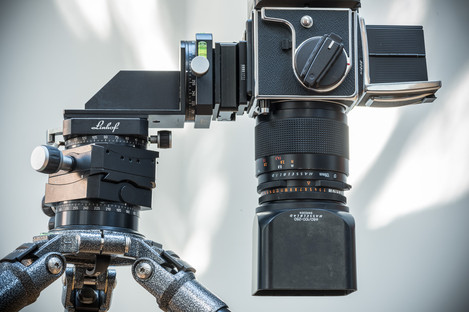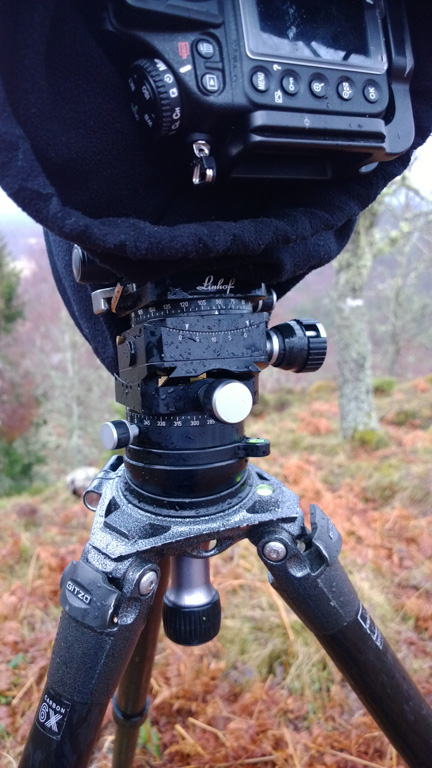Flawed Genius ?
I have now had a Linhof 3D Micro tripod head for over two years. I had used the Manfrotto geared heads 410 and 405 for at least a decade before this, but had become frustrated with their vulnerability to minor knocks and was in search of something more robust and reliable.
http://www.linhofstudio.com/products/Linhof-Heads
In truth the 3D Micro is not really a direct replacement for the Manfrotto heads. Its lateral tilting movements are strictly limited to 12º from zero in each direction. The manufacturer's design philosophy appears clear enough: create a head that can offer the photographer a perfectly level camera with the most microscopically precise adjustments imaginable (and with Quick release). In that sense the full product title (Linhof 3D Micro Levelling Head Q) is Teutonically accurate.
Conceptually the idea for the 3D Micro comes from the monoblock monorail base of the Linhof M679 CS camera, a feature which Linhof claim means that the M679 CS does not need a tripod head at all, just the tripod, as its own base gives movement enough. Essentially it offers ultra-precise tilts – levelling – in two axes, and two panning actions, below the tilts, and above them. The inclusion of panning below and above the movements not only improves flexibility it also makes a breeze of perfectly-levelled stitched panoramas. The standard camera quick release interface is a Linhof Q plate, although the Arca Swiss-style 'dove tail track' is also available for the same price.
The problem is, while a level camera is often the goal of the view camera photographer doing architectural work, there are enormous numbers of other possible camera positions where use of a tripod is essential/desirable, but where a level camera isn't necessarily. Photography in the field is inherently unpredictable, susceptible to opportunity and creativity. We might imagine that we are heading out with a level(ish) camera image in mind (vistas, architecture etc), yet inspiration may still strike in all sorts of odd angles and perspectives, including straight down or straight up. So the question is, are the 3D Micro's inherent design limitations tolerable for the working landscape photographer?
For anyone new to using this kind of equipment, there is simply no comparison with any consumer model on the market. The precision of the movements and the damping of the panning controls is an engineering experience in itself. No locking knobs are needed for the levelling actions; the fine adjustment knobs are super-smooth but will not budge unless positively twisted. Initially I had the 3D Micro mounted straight onto the flat plate of my Gitzo Systematic tripod. In this arrangement there is no really quick way of positioning it; the damping of the panning plates defies rushing, and the micro drive actions of the tilts are even slower. However, there is a solution… the Really Right Stuff levelling head makes an excellent platform for the 3D Micro; loosening the RRS head lock allows the camera (mounted on the 3D Micro) to be quickly pointed in the right direction and locked again in a single quick turn of the wrist. Precise fine tuning can then follow in a more leisurely fashion. Subsequently Sami Nabeel has shown me his similar set-up, but using the Novoflex Magic Balance levelling base instead. This can be obtained from Speed Graphic (rather than importing the RRS from the USA) and makes a less expensive and at least as capable alternative to the RRS.
The RRS levelling base adds another 15º of movement either side of zero too, extending positioning capabilities significantly. However, even so, many compositional ideas require more than 12º plus 15º (3D micro + RRS levelling base) of tilt. A few more degrees can be improvised with the tripod, but after that the difficulty of setting up starts to become burdensome and eventually downright impossible. This has to be seen in the light of compositional orientation too. A dslr (or any camera) with an L bracket can work fine, but this really is an essential accessory, for without it only horizontal compositions will be possible, since the camera cannot be put 'on its side'.
Realistically, Linhof designed and engineered this head with the view camera in mind, and all view cameras have 'orientation switching' (ie turn the ground glass screen through 90º) within the camera body itself, as far as I know. There is no doubt that for many view camera photographers, a 'neutral' stance (the level camera) is the 'default' position, perfect for this head. It is for me. But we also like to get creative from time to time.
Having discussed its limitations with Paula Pell-Johnson from Linhof Studio on a few occasions I was delighted to test the solution that Linhof have engineered. This is the simply named, Angled Device. Incredibly, this accessory can take the weight of a full-size view camera, if required, to point straight down (for nature details, document copying etc), or even straight up… although photographing the night sky with a Gandolfi 5x7inch would be a minority activity I imagine. It incorporates an immensely strong welded steel cross section, with a quick release on one axis end, and a panning plate (with Q/R) on the other, perpendicular to the quick release. Essentially the Angled Device pretty well delivers solutions to all the objections I have raised about the 3D Micro as a stand-alone item. (Although a high quality levelling base below the 3D Micro is still essential for speed of set-up.)
There is a price to pay for the Angled Device, beyond the £195 + VAT it costs; the additional 300 grams of weight and bulk in your pack. And it takes some getting used to. Just as well most photographers using this kind of equipment enjoy the challenge of quirky design. But it most certainly does work, and in the studio makes an excellent and precise tool for use with a vertically orientated camera eg copying, table top micro photography etc.
It is impossible to be dispassionate about the 3D Micro. It is also hard to rationalise the cost (£799 + VAT) except by comparing it with the Arca Swiss Magic Cube, and Arca Swiss D4, its only obvious rivals. The Magic Cube is much more expensive, but then it is also bulkier (not much heavier though), and more flexible (the Magic Cube can manage vertical compositions by combining a cunning built-in cantilever with more generous tilt capabilities). The D4 is a similar price to the 3D Micro, and is the closest alternative to the aforementioned Manfrotto 410 and 405 heads. But well-made as they are, the Arca products lack the bomb-proof precision of the Linhof.
I love the 3D Micro; perhaps that is partly because it is flawed, because you have to work around it a bit, get to know its strengths and weaknesses (Linhof now offer a push-on crank handle for the micro drive knobs that makes tilting much quicker.) It rewards the user with the most beautifully-damped, smooth, precise actions imaginable. Crazy logic perhaps, or maybe no logic at all, but especially when there is time to work on the crafting of one image, with a high resolution camera/view camera of any description, this is one piece of tripod engineering that feels hewn from solid, inspiring total confidence and quiet satisfaction.
Pros:
- Rock solid
- Precision controls
- Phenomenal accuracy
- Perfect damping
- Panning actions top and bottom
- Suits any large tripod
Cons:
- Inflexible
- Impossible for many cameras to do verticals, without the Angled Device
- Needs levelling base, to be a practical option.
- Micro drives almost too accurate for field use (slow to adjust)
- Potentially vulnerable to sand etc.
- Expensive

